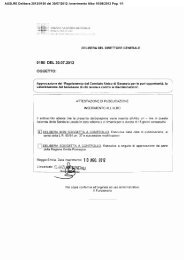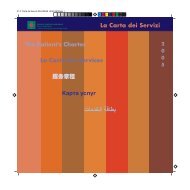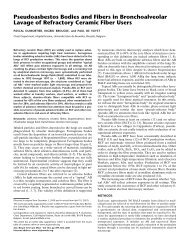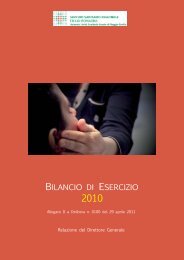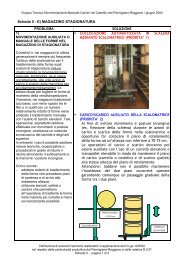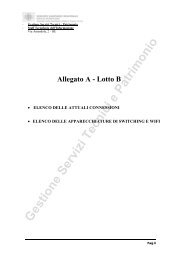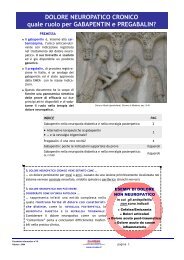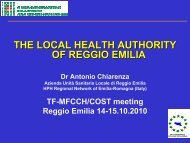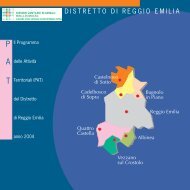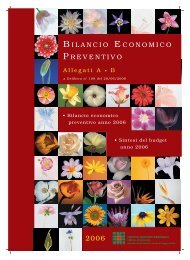Methods for the determination of the hazardous properties - TSAR
Methods for the determination of the hazardous properties - TSAR
Methods for the determination of the hazardous properties - TSAR
You also want an ePaper? Increase the reach of your titles
YUMPU automatically turns print PDFs into web optimized ePapers that Google loves.
ECB/TM/18(97) rev.1<br />
2.4 HISTOPATHOLOGY<br />
Data should be summarised in tabular <strong>for</strong>m, showing <strong>for</strong> each test group <strong>the</strong> number <strong>of</strong> animals at <strong>the</strong><br />
start <strong>of</strong> <strong>the</strong> test, <strong>the</strong> number <strong>of</strong> animals showing lesions, <strong>the</strong> types <strong>of</strong> lesions and <strong>the</strong> percentage <strong>of</strong> animals<br />
displaying each type <strong>of</strong> lesion.<br />
2.5 DATA ANALYSIS<br />
Results should be evaluated by an appropriate statistical method. Any recognised statistical method may<br />
be used.<br />
3 REPORTING<br />
3.1 TEST REPORT<br />
The final report should include but not be limited to:<br />
· The identification <strong>of</strong> test fibre, ei<strong>the</strong>r by name or code number.<br />
· The composition and o<strong>the</strong>r appropriate characteristics <strong>of</strong> <strong>the</strong> test fibres.<br />
· A description <strong>of</strong> <strong>the</strong> test rats, including strain, source, number, allocation, sex, body weight range, age,<br />
method <strong>of</strong> identification, housing, diet etc.<br />
· A description <strong>of</strong> <strong>the</strong> doses, dose regimen and duration <strong>the</strong> treatment periods.<br />
· A description <strong>of</strong> all methods.<br />
· A description <strong>of</strong> all results.<br />
· All statistical results as described in Section on Data Analysis and Method above.<br />
· Summary tables as described above.<br />
· O<strong>the</strong>r statistical treatment <strong>of</strong> results when appropriate.<br />
· A summary and assessment <strong>of</strong> all adverse effects.<br />
· Figures <strong>of</strong> body weights.<br />
· Summary tables <strong>of</strong> antemortem clinical signs, mortality data and body weights<br />
· Individual tables <strong>of</strong> body weights and necropsy findings.<br />
. Tables <strong>of</strong> histopathological data.<br />
. Discussion <strong>of</strong> <strong>the</strong> results.<br />
. Interpretation <strong>of</strong> <strong>the</strong> results.<br />
4 REFERENCES<br />
(1) WHO, World Health Organisation, Reference <strong>Methods</strong> For Measuring Airborne Man<br />
Made Mineral Fibres (MMMF), prepared by <strong>the</strong> WHO Regional Office <strong>for</strong> Europe,<br />
Copenhagen (1985).<br />
(2) Pott, F. et al., Beurteilung der kanzerogentiät inhalierbarer fasern. In: Faserförmige<br />
Stäube. Vorschriften, Wirkungen, Messung, Minderung, Tagung Fulda, 6-9 September<br />
1993, Kommission Reinhaltung der Luft im VDI und DIN. (VDI-Berichte 1075)<br />
Düsseldorf, VDI-Verl. 1993, pp. 17-77.<br />
- 51 -



